
How Much Power Do You Really Need in an Electric Mountain Bike Motor?
Introduction
Picking your first or next electric mountain bike is an exciting adventure. Among all the features to consider, one question often pops up first: motor power. It makes sense to start here. Power seems like a clear way to measure performance, promising exciting climbs and easy miles. But the answer to "how much power do you need?" isn't simple; it depends on many factors.
We don't want to push you toward the biggest numbers on a spec sheet. Instead, we want to help you understand what those numbers mean and find the power level that matches your riding style, terrain, and goals.
In this guide, we'll break down eMTB motor power into easy-to-understand parts. We'll help you figure out your needs, explain specifications, and look at other important factors that affect your ride experience. Let's begin.
Understanding eMTB Motor Power: Watts, Torque, and What They Mean for Your Ride
To make a smart choice, we first need to understand the basic units of eMTB motor power: Watts (W) and Torque (Nm). These two measurements tell us different things about how a motor performs.
Watts (W): The Engine's Output
Watts measure how quickly the motor can do work – basically, its power output. You'll usually see two watt figures: nominal and peak.
Nominal power (like 250W) is the power a motor can deliver continuously without overheating. In many places, such as the EU and UK, 250W is the legal limit for continuous power on public roads. Peak power is the maximum output the motor can reach for short periods, which helps when accelerating or climbing steep, short hills. Peak power ratings are often two to three times the nominal power. For example, a 250W nominal motor might peak at 500-750W.
Torque (Nm): The Twisting Force for Climbing and Acceleration
Torque, measured in Newton-meters (Nm), is the rotational force the motor produces. This gets you moving from a stop and helps you climb challenging hills.
For electric mountain biking, especially on technical and steep terrain, torque often tells you more about a motor's climbing ability than wattage alone. It's the "grunt" that pulls you over roots and rocks. You'll find eMTB motors with torque ranging from about 50Nm for lightweight systems to 70Nm, 85Nm, 90Nm, and even up to 120Nm in some high-performance models. Most full-power eMTBs have 85-95Nm of torque.
The Interplay: How Watts and Torque Work Together
Watts and torque are connected; power (Watts) comes from torque and rotational speed (how fast you pedal). However, they affect how the ride feels in different ways. A motor with high torque gives a strong initial push and works well on slow, technical climbs. A motor with higher wattage might feel stronger on longer, faster climbs where you can keep pedaling at a higher speed.
We've found that a motor with high torque (like 85Nm) but a legal 250W output can handle steep, root-filled climbs easily, giving instant power. In contrast, a motor with higher watts but lower torque might feel smoother on longer, less technical climbs but need more effort from you on very steep sections.
Here's a simple comparison:
| Feature | Watts (Power) | Torque (Newton-meters) |
| What it is | Rate of energy delivery; sustainable output | Rotational force; twisting power |
| What it feels like | Sustained speed assistance; ability to hold speed up longer, less steep climbs | Punch/acceleration; ability to get started easily; climbing ability on steep/technical sections |
| Key benefit for eMTB | Maintaining speed, especially on rolling terrain and moderate climbs | Conquering steep inclines, technical sections, and quick accelerations out of corners |
Understanding both these measurements is key to knowing how an eMTB will perform on the trail.
Key Factors Determining Your Ideal eMTB Motor Power
Finding the right motor power isn't about picking the biggest number. It's about matching the motor to your specific needs and preferences. Let's explore the main factors that will affect your decision.
Factor 1: Your Predominant Riding Terrain
The trails you plan to ride are a major factor in determining your power needs.
If you mostly ride relatively flat terrain, canal paths, or smooth fire roads, a motor with lower power (such as 250W nominal, 50-70Nm torque) will likely be enough. It will give you a nice boost without being too much.
For riders taking on up-and-down trails with a mix of climbs, descents, and moderately technical singletrack, a medium power motor (like 250-500W nominal, 70-85Nm torque) offers great versatility. This provides enough help for most climbs while maintaining good range.
If your adventures involve long, steep climbs, challenging alpine trails, or very technical sections, higher power output becomes a big advantage. A motor with strong peak power (even if nominally 250W where legally required) and high torque (85Nm+) is often preferred. From our experience, on relentless, rocky climbs, a motor delivering consistent high torque makes a huge difference, reducing tiredness and helping you clean technical sections that would be nearly impossible otherwise.
Factor 2: Your Body Weight and Typical Load
Your weight, and any gear you regularly carry, directly affects how much power you'll need to get the assistance you want.
Lighter riders can often get satisfying assistance with less powerful motors. The motor doesn't have to work as hard, which can also lead to better battery efficiency.
Heavier riders, or those who often go bikepacking or carry substantial gear, will benefit a lot from higher torque and potentially higher sustained power. More weight requires more force to accelerate and climb. Heavier riders or those carrying a lot of cargo often have a noticeably better experience with motors providing at least 70-85Nm of torque and strong peak power capabilities.
Factor 3: Your Riding Style and Goals
How you approach your rides and what you want to achieve plays a vital role.
If your eMTB is for leisurely exploration, enjoying the scenery, and getting a gentle assist, moderate power levels are usually perfectly adequate and can provide a more natural riding feel. For riders who love to push their limits, seek maximum speed on descents (and want quick assistance back up), or use their eMTB like a personal shuttle, higher peak power and responsive, high-torque motors are highly desirable. They provide the instant kick needed.
If you're primarily looking to augment your fitness, extend your range, or get a bit of help on the toughest climbs while still putting in a solid effort, a lower to moderate power system, or a full-power system with highly tunable assist levels, will be ideal. This allows for more rider input. For epic all-day rides or multi-day bikepacking trips, the balance between power and battery efficiency becomes critical. You'll want enough power for the terrain, but also a motor and battery combination that provides the necessary range.
Factor 4: Your Current Fitness Level and How Much You Want to Pedal
Your physical condition and how much effort you want to contribute are important considerations.
Highly fit riders might use an eMTB to spin on recovery days, get in more laps than they could unassisted, or explore further. They may prefer less overall assistance or systems with very low, natural-feeling support modes.
For riders who need more help to overcome physical limitations, keep up with fitter friends, or simply to enjoy longer and steeper rides without excessive strain, a more powerful motor can be a game-changer, opening up new possibilities.
Scenario-Based Mini-Profiles & Power Recommendations:
To help clarify these factors, let's look at a few rider profiles:
• Profile 1: "The Weekend Explorer"
Characteristics: Rides varied local trails, moderate hills, prioritizes fun and exploring new areas, average weight. Wants good range and a natural ride feel.
Power Suggestion: A balanced motor system offering around 60-75Nm of torque, with a focus on smooth power delivery and good battery efficiency. A nominal 250W motor (common in many regions) with these torque figures would be excellent.
• Profile 2: "The Alpine Adventurer/Heavy Rider"
Characteristics: Regularly tackles steep, long climbs, enjoys challenging technical terrain, may carry extra gear for big days out, or is a heavier rider. Values climbing prowess and robust assistance.
Power Suggestion: A high-torque motor, typically 85Nm or more. This ensures ample power for the toughest ascents and when carrying loads. Peak power capabilities will also be important.
• Profile 3: "The Fitness Enthusiast/Lightweight Rider"
Characteristics: Uses the eMTB to extend workout range, enjoys the pedaling feel, and wants assistance to be subtle and natural. May be a lighter rider focused on agility.
Power Suggestion: A lighter-weight eMTB system with lower to moderate torque (e.g., 50-60Nm, like those from Fazua or TQ systems) could be ideal. Alternatively, a "full-power" motor used predominantly in its lower assist modes can also work well, offering versatility if more power is occasionally needed.
By considering these factors, you can start to narrow down the motor power characteristics that will best suit your eMTB adventures.
Decoding Power Ratings: A Practical Guide to Common eMTB Motor Specs
Now that we've covered the theory and personal factors, let's look at common power categories you'll encounter in the eMTB market. Understanding these can help you relate specifications to real-world performance. This is the most common nominal power rating, largely due to regulations in many parts of the world.
In the European Union and the United Kingdom, e-bikes (pedelecs) are legally limited to a 250W continuous rated motor output, with assistance cutting off at 15.5mph (25km/h). This regulation ensures a degree of parity and safety.
Don't let the "250W" figure fool you. The key lies in their peak power capabilities (often 500-750W or more) and, crucially for eMTBs, their torque output (which can be 85Nm, 90Nm, or even higher). A well-designed 250W nominal motor with high torque can feel incredibly capable on steep climbs.
These motors are suitable for a vast range of riders in regulated areas, from casual trail riders to serious enduro enthusiasts, depending on the motor's specific torque, peak power, and software tuning.
500W Motors: A Step Up in Grunt?
Motors marketed as "500W" can refer to either nominal or peak power, depending on the manufacturer and market regulations.
In some regions without strict 250W nominal limits, 500W might be the continuous rating. More commonly, especially with hub motors or some systems aiming for a higher power feel, it might refer to peak output capabilities or a rating that sits between nominal and true peak.
A true 500W nominal motor (where legal and practical for eMTBs) offers a noticeable increase in sustained climbing power, which can be beneficial for heavier riders or those facing long, grinding ascents where higher continuous output is advantageous.
Legality is a primary concern depending on your location. Higher sustained power also generally leads to increased battery consumption, potentially reducing range compared to a more efficient 250W system with comparable battery capacity.
750W Motors: The "Do-It-All" Powerhouse or Overkill?
This power rating is frequently seen in the US market, often associated with Class 1, 2, or 3 e-bikes.
In the US, 750W (or ~1 horsepower) is often the maximum permissible power for certain ebike classes, although this can refer to peak output rather than continuous nominal power. These motors provide substantial assistance, making light work of steep inclines and offering strong acceleration. They are often favored by heavier riders or those looking for maximum assist.
The trade-offs can include increased bike weight, faster battery drain, and a ride feel that some might find overpowering or less natural, especially on technical terrain requiring finesse.
1000W+ Motors: For Extreme Needs Only?
Motors exceeding 1000W represent the highest tier of power in the e-bike world.
These are often found on bikes designed for very specific, extreme off-road use, sometimes blurring the lines with electric motorcycles. Bikes with such powerful motors are almost universally restricted from public multi-use trails and are intended for private land or designated off-road vehicle areas.
Legitimate use cases for eMTB are rare and typically involve private property, extremely steep terrain beyond normal trail riding, or specialized utility purposes.
The Rise of "Lightweight" eMTBs vs. "Full-Power" Beasts
A significant trend in the eMTB market is the divergence between "lightweight" and "full-power" systems.
Discussing motors like Fazua, TQ, Specialized SL systems vs. traditional full-power systems
Lightweight systems (e.g., Fazua Ride 50/60, TQ HPR50, Specialized SL 1.1/1.2) typically offer lower torque (around 50-60Nm) and are paired with smaller, lighter batteries. Full-power systems (e.g., Bosch Performance Line CX, Shimano EP8/EP801, Brose Drive S Mag) generally deliver higher torque (85-95Nm, sometimes more) and use larger batteries.
Lightweight eMTBs aim for a ride feel closer to traditional mountain bikes, emphasizing agility and handling, with assistance that feels more like a strong tailwind. Full-power eMTBs prioritize maximum climbing assistance and the ability to conquer the steepest terrain with less rider effort.
This table summarizes common eMTB motor power categories:
| Power Category | Typical Nominal Power (Region Dependent) | Typical Torque Range | Ideal Terrain | Typical Rider Profile | Key Pros | Key Cons | Example Motor System Types (General) |
| Lightweight Assist | 250W (often lower effective continuous) | 50-60Nm | Varied trails, moderate climbs, flowy singletrack | Fitness-focused, agility seekers, traditional MTB feel fans | Natural ride feel, lighter bike, better handling, good for workouts | Less outright climbing power, smaller battery/range | Fazua-type, TQ HPR50-type, Specialized SL-type |
| Legal Limit Optimized (EU/UK Focus) | 250W | 70-95Nm+ | All-mountain, enduro, technical climbs | Most eMTB riders in regulated areas, from enthusiast to expert | Legally compliant, very capable with high torque, good balance | Assistance cut-off at 25km/h, peak power is key differentiator | Bosch Performance CX, Shimano EP801, Brose Drive S Mag (250W versions) |
| Mid-Power (US context / High Peak) | 250W-500W (can be nominal or reflect peak) | 70-90Nm | Steep climbs, heavier riders, varied terrain | Riders wanting more consistent support, heavier individuals | More sustained power where legal/needed, good for demanding rides | Potential legality issues, higher battery drain than optimized 250W | Many US Class 1/2 systems, some Bafang or similar mid-drives |
| High-Power (US context) | Up to 750W (often peak capability) | 85Nm+ | Very steep terrain, maximum assistance seekers | Heavier riders needing max assist, utility cargo use | Significant power, tackles extreme conditions with ease | Heavier, potential for being "too much," legality, fast battery drain | Higher-end US Class 1/2/3 systems |
| Extreme Power | 1000W+ | 100Nm+ | Private land, extreme off-road, specialized use | Niche users with specific extreme requirements | Immense power | Generally not legal for trails, very heavy, more like an e-moto | Specialized high-output custom builds, some ultra-performance hubs |
Understanding these categories helps to place individual bike specifications into a broader context.
Beyond Raw Power: Other Critical Factors for Your Electric Mountain Bike Performance
While motor power (Watts and Torque) is a headline feature, it's only one part of a complex system. Several other factors critically influence your eMTB's performance and overall ride experience. Focusing solely on power numbers can be misleading.
A powerful motor is useless without sufficient energy to fuel it. Battery capacity, measured in Watt-hours (Wh), dictates your potential range. Generally, higher power output from the motor, especially if used frequently in higher assist modes, will drain the battery faster. It's a direct relationship: more assistance demands more energy.
Consider how long and far you want to ride. For longer, more demanding rides, especially in hilly terrain or if you plan to use higher assist levels, a larger battery (e.g., 600Wh, 700Wh, or even more) is advisable. Conversely, lightweight eMTBs with less powerful motors can achieve decent range with smaller, lighter batteries (e.g., 360Wh-430Wh).
Motor Type and Integration: Mid-Drive vs. Hub Drive in the Mountains
The motor's physical location and type significantly impact performance, especially for mountain biking.
Mid-drive motors (from brands like Bosch, Shimano, Brose, Yamaha, Specialized) are positioned at the bike's bottom bracket. This offers several advantages for eMTBs:
• Better Weight Distribution: Centralized and low weight improves balance and handling.
• Leverages Bike's Gears: The motor drives the chain, allowing it to utilize the bike's existing gears for optimal efficiency across different speeds and terrains. This is crucial for climbing.
• Natural Ride Feel: Power is applied through the cranks, similar to regular pedaling.
Most high-quality eMTBs use mid-drive systems for these reasons.
Hub motors are located in the front or rear wheel hub. While common on commuter or less expensive e-bikes, they are generally less suited for demanding mountain biking due to:
• Unsprung Weight: A hub motor in the rear wheel adds unsprung mass, negatively affecting suspension performance and traction.
• Weight Distribution: Can make the bike feel unbalanced (rear-heavy or front-heavy).
• Gearing: Does not benefit from the bike's drivetrain gearing for climbing torque.
• Overheating: Can be more prone to overheating on long, steep climbs.
While some capable hub motors exist, mid-drives are the undisputed kings for serious eMTB performance.
Software, Sensors, and Power Delivery
The raw numbers of Watts and Torque don't tell the whole story. How that power is delivered is just as important.
Modern eMTB motors use sophisticated torque sensors that measure how hard you're pedaling. This data, combined with cadence (pedaling speed) sensors and sometimes wheel speed sensors, allows the motor's software to deliver power smoothly and proportionally to your effort. Good software tuning results in an intuitive, natural-feeling assist that complements your pedaling rather than feeling like an on/off switch.
We've noticed Bosch systems tend to offer very robust, immediate power, often feeling very strong from the first pedal stroke. Shimano EP-series motors are often praised for a very "natural" trail-bike feel, with power delivery that mimics rider input very closely. Brose motors are known for being very quiet and can offer a highly customizable, smooth power delivery. These are generalizations, and newer models continually evolve, but the feel of the assist is as important as the raw output numbers.
It's crucial to understand that two motors with identical peak watt and torque numbers can feel drastically different on the trail. This is due to differences in internal motor construction, sensor types (cadence sensing only vs. sophisticated torque sensing), and, most significantly, the software programming that dictates power delivery curves and responsiveness. Some systems even allow for custom tuning via companion apps, enabling riders to fine-tune assist levels and power characteristics to their liking. Don't overlook this "feel" aspect; it's paramount for a truly enjoyable eMTB experience.
Overall Bike Weight and Geometry
The motor's power has to move the entire bike and rider. A lighter bike will inherently feel quicker and require less power for the same level of assistance compared to a heavier one. Furthermore, modern eMTB geometry, designed for stability and control, allows riders to make the most of the available power, especially on technical climbs and descents.
Considering these factors beyond just raw motor output will lead to a more balanced and satisfying eMTB choice.

Is There Such a Thing as "Too Much" Power on an Electric Mountain Bike?
While the allure of maximum power is strong, it's worth considering if there's a point where more power becomes detrimental, or at least offers diminishing returns for typical eMTB use.
Excessive power, especially if delivered abruptly, can make an eMTB challenging to handle.
On loose climbs, technical sections, or slippery roots, a motor with too much instant torque can lead to wheelspin and loss of traction. Learning to modulate high power outputs requires skill and can have a steeper learning curve for new eMTB riders.
There are ongoing discussions within the mountain biking community about the potential for high-powered eMTBs to cause more trail wear, especially if ridden insensitively. Additionally, very fast-climbing eMTBs can create larger speed differentials with unassisted riders or other trail users, requiring more awareness and consideration for trail etiquette.
Battery Drain and Overall System Weight
Higher power motors typically demand more from the battery, leading to faster drain if that power is consistently utilized. To compensate, manufacturers might fit larger, heavier batteries, contributing to an overall heavier bike. This extra weight can then negate some of the agility benefits, especially when the motor is off or in lower assist modes.
Legal and Regulatory Considerations Revisited
As we've discussed, many regions have legal limits on e-bike motor power for on-road and public trail use.
It's important to reiterate the common 250W continuous power limit in the EU/UK and the distinctions of the US Class system (Class 1: pedal-assist up to 20mph; Class 2: throttle-assist up to 20mph; Class 3: pedal-assist up to 28mph, often with 750W max motor). Some motors boast peak power nearly four times the legal continuous limit in some regions, pushing existing boundaries. UK and EU government regulation stipulates that on a public highway, an ebike motor's continuous rated power must not exceed 250 watts. Opting for a motor far exceeding local regulations could lead to legal issues if used in restricted areas.
While "too much" power is subjective, it's clear that simply chasing the highest numbers isn't always the best strategy. A balanced system that suits your skill, terrain, and legal environment is usually preferable.
Conclusion
Navigating the world of electric mountain bike motor power can seem daunting, but it boils down to understanding your personal needs and how different motor characteristics meet them.
The "right" amount of power is deeply personal. It depends on where you ride, your physical attributes and fitness, your riding style, and what you want to achieve with your eMTB. There's no single answer that fits everyone.
Remember that motor power is just one component. Battery capacity, motor integration, software tuning, bike weight, and geometry all play crucial roles in the overall performance and feel of an eMTB. A holistic view is essential.
Ultimately, no amount of reading or theorizing can replace the feeling of an eMTB on the trail. If possible, we always advise demoing bikes with different motor systems and power levels on terrain similar to what you'll be riding. This is the best way to discover what truly works for you and which motor "feel" you prefer.
The goal is to find an electric mountain bike that empowers you, extends your adventures, and, most importantly, maximizes your fun on the trails. With a bit of research and self-assessment, you can find the eMTB with the perfect power characteristics to unlock new possibilities and elevate your riding experience. Happy trails!
FAQs
1. How many watts do I need for mountain biking on steep terrain?
While 250W is the legal nominal limit in many regions, look for motors with high torque (85Nm+) and strong peak power capabilities for conquering steep alpine terrain and technical climbs.
2. What's more important for eMTBs: watts or torque?
For electric mountain biking, torque (measured in Nm) is often more important than watts, especially for technical climbing and overcoming obstacles. Torque provides the "grunt" needed on steep climbs and challenging terrain.
3. Are lightweight eMTB motors with lower power worth considering in 2025?
Yes! Lightweight systems (50-60Nm) offer a more natural ride feel, better handling, and are ideal for fitness-focused riders who want subtle assistance rather than maximum power.
4. How does rider weight affect the motor power needed for electric mountain biking?
Heavier riders (>200lbs/90kg) generally benefit from motors with higher torque (75Nm+) and stronger peak power capabilities to provide adequate assistance, especially on climbs.
5. Will a higher-powered eMTB motor drain my battery faster?
Yes, more powerful motors typically consume more battery, especially in higher assist modes. For longer rides, balance your power needs with sufficient battery capacity (600Wh+ for high-power systems).



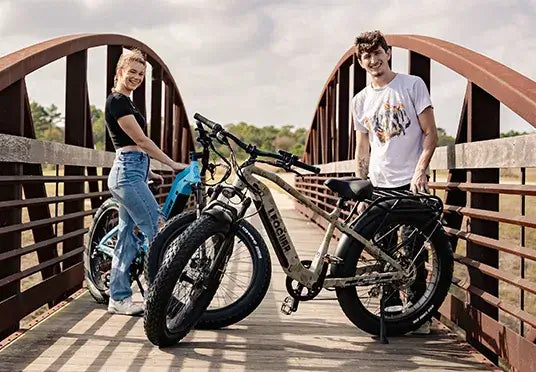
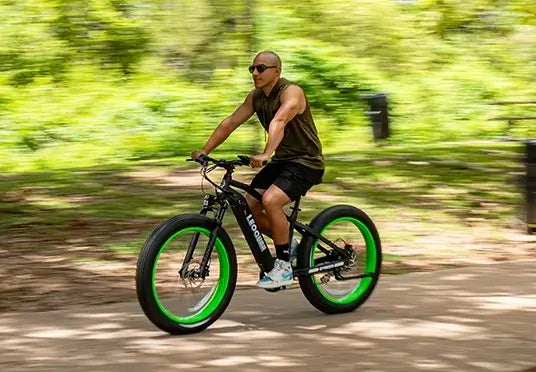
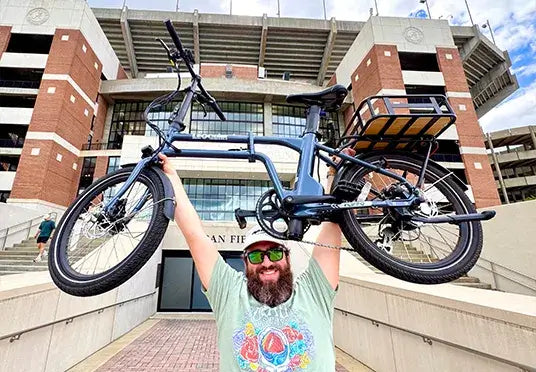
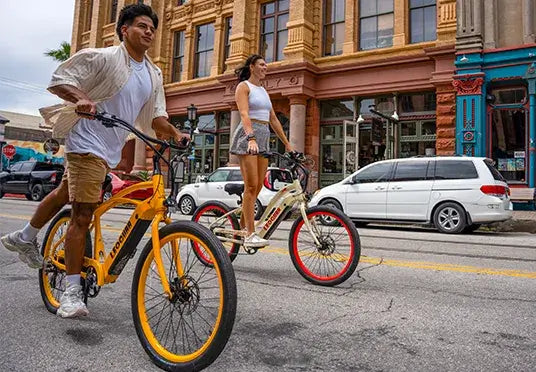
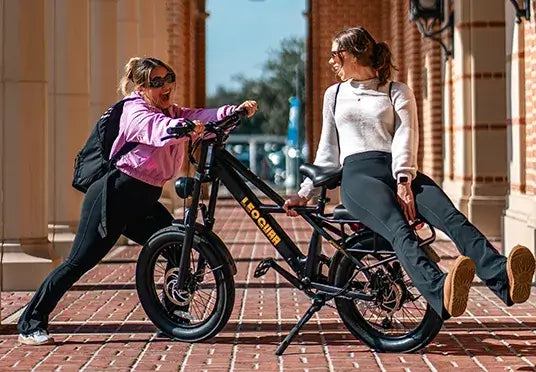
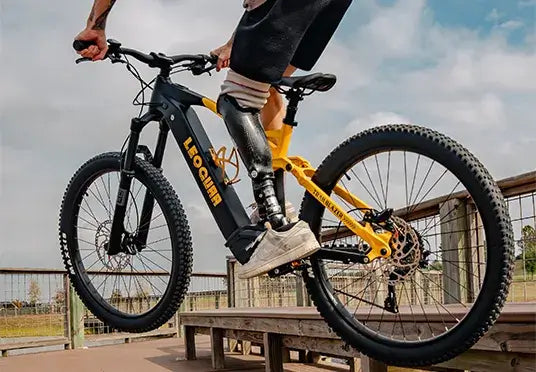

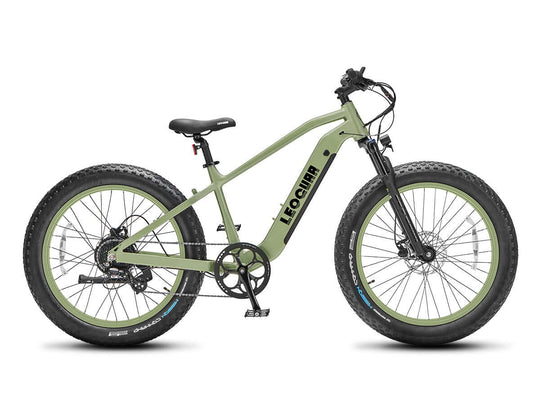
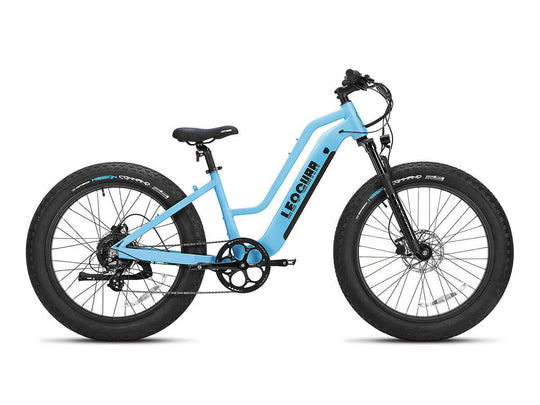
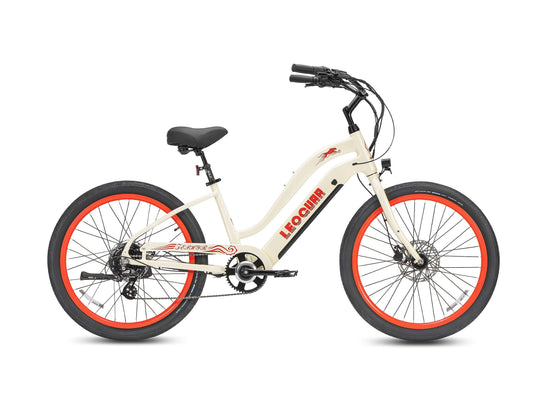
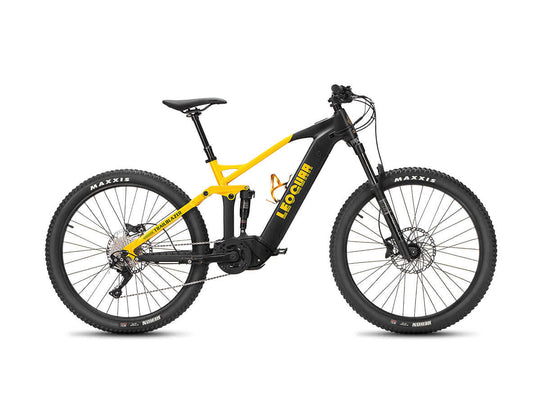
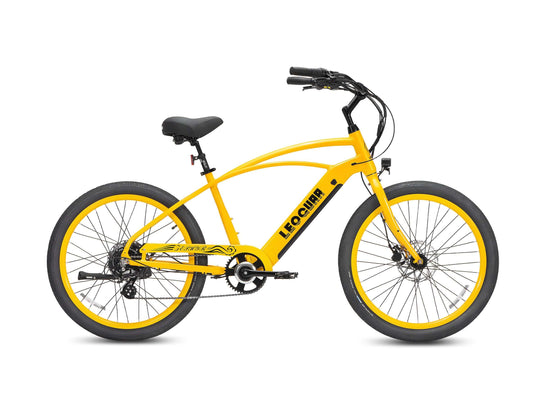
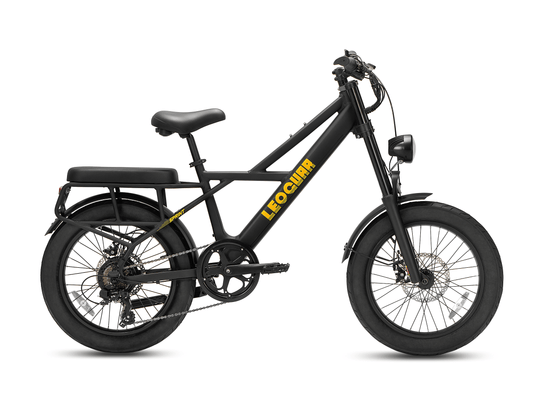

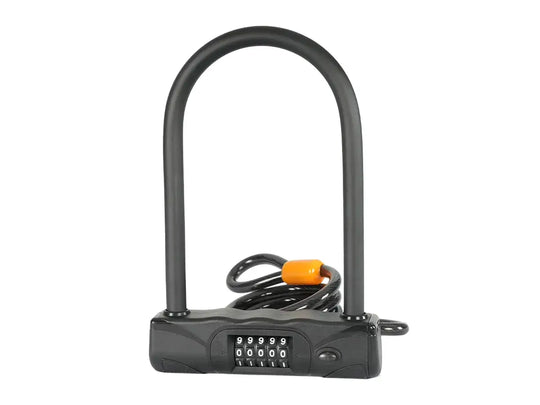
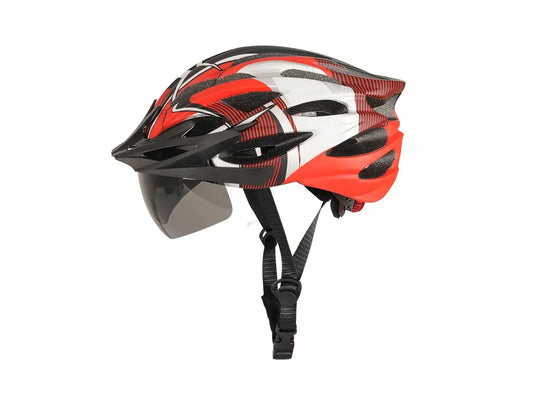
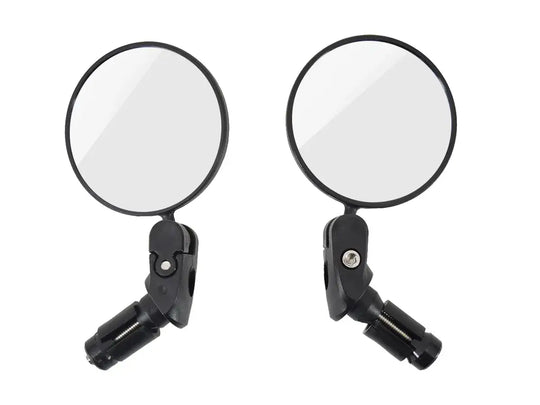

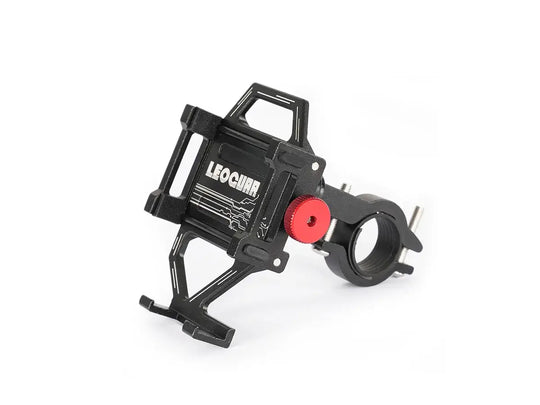
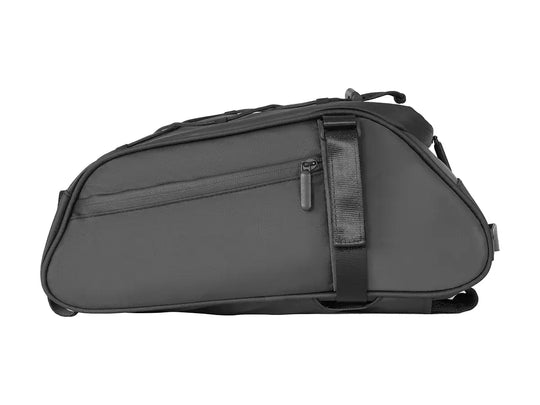
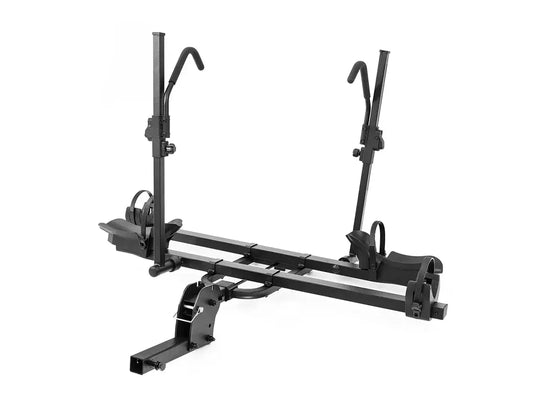
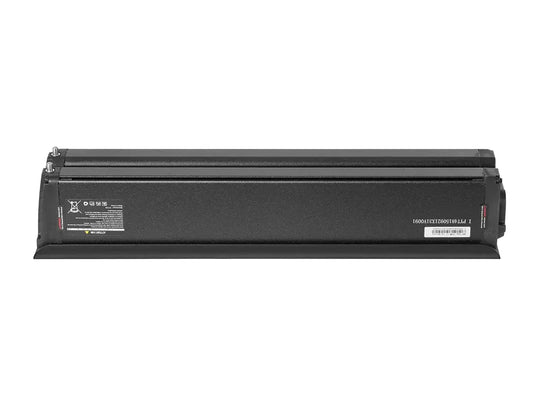
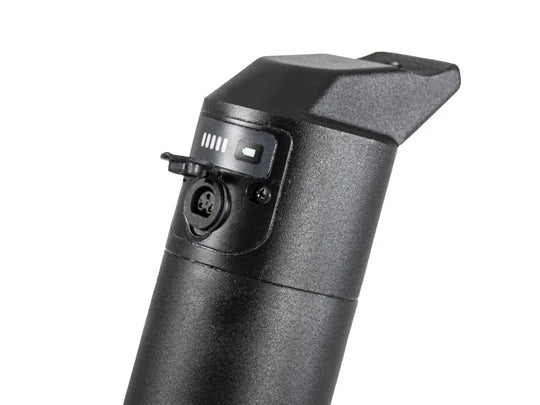
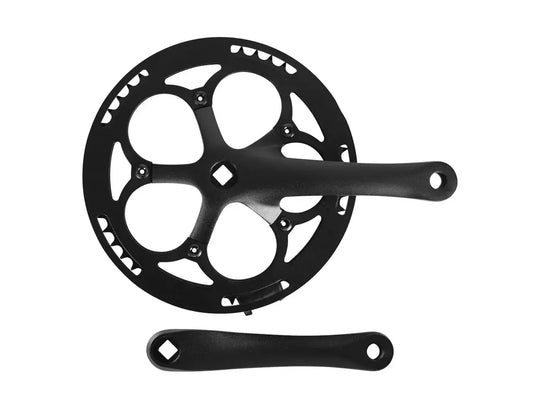
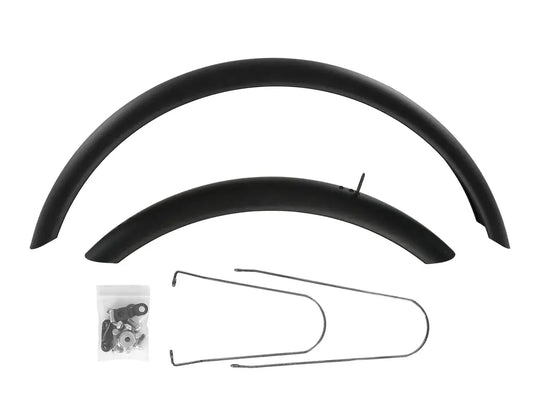
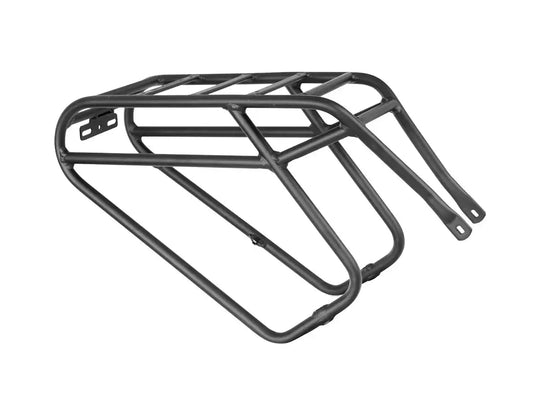
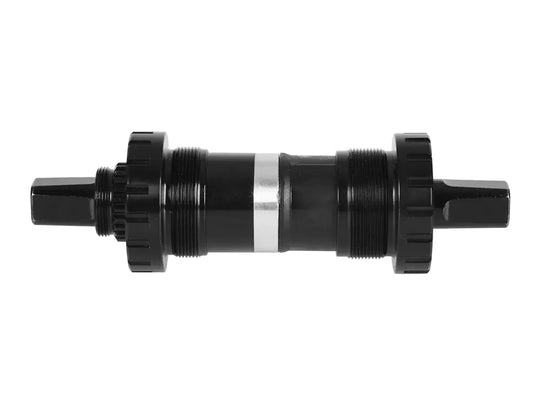
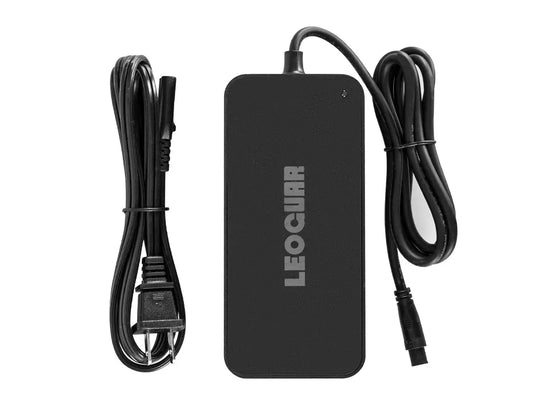
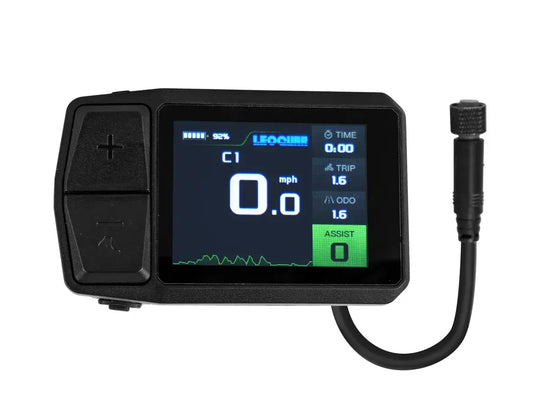
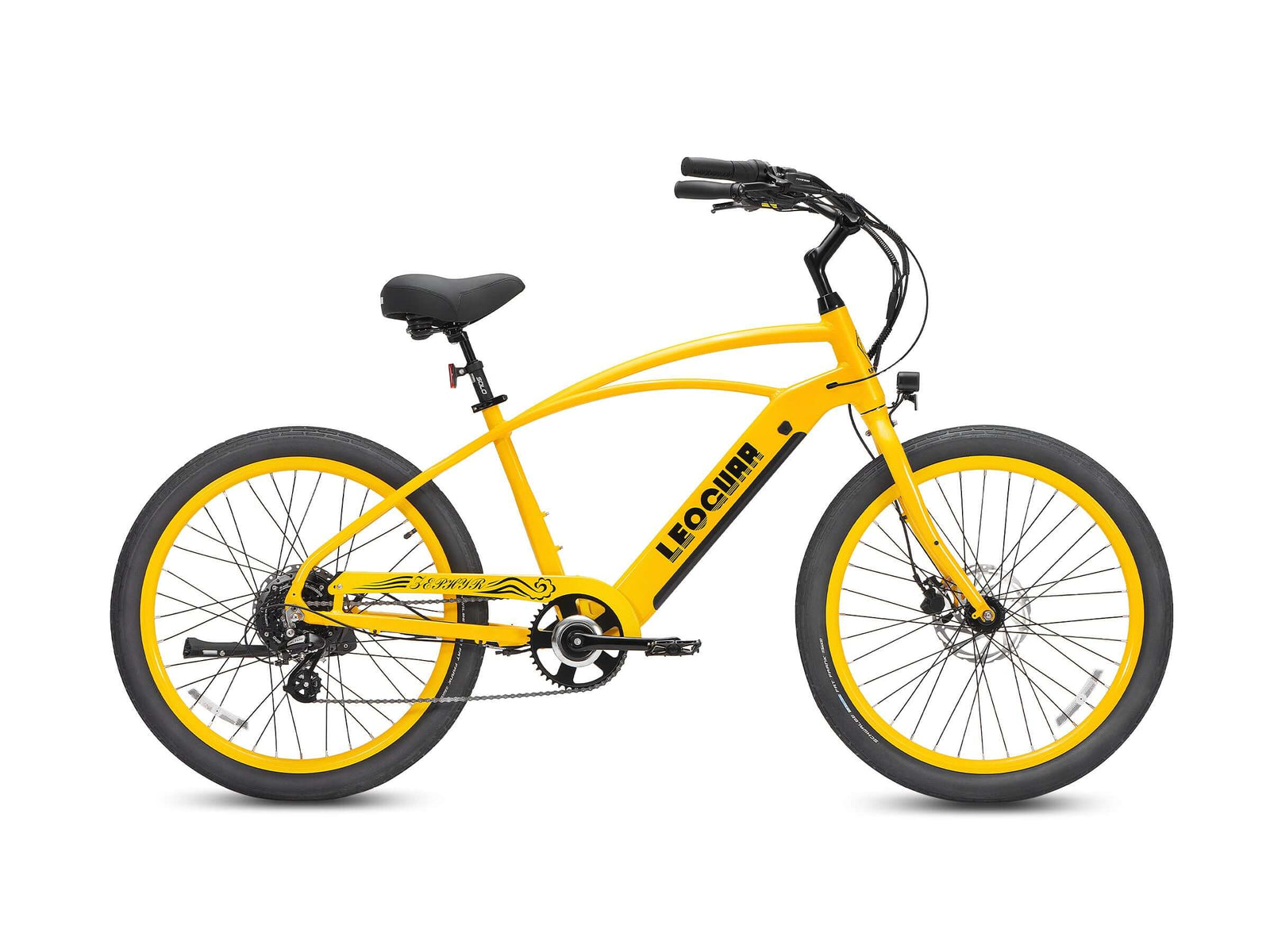








Leave a comment